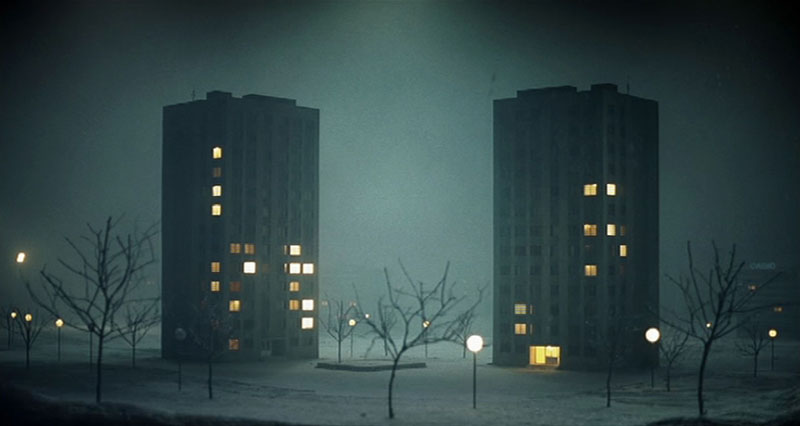 [Image: From Pierre Huyghe, “Les grandes ensembles” (2001)].
[Image: From Pierre Huyghe, “Les grandes ensembles” (2001)].
A short news items in New Scientist this week describes the work of University of Michigan engineers who have developed a way to, in effect, synchronize architectural structures at a distance. They refer to this as “ghosting”:
When someone turns the lights on in one kitchen, they automatically switch on in the connected house. Sounds are picked up and relayed, too. Engineers at the University of Michigan successfully linked an apartment in Michigan with one in Maryland. The work was presented at the IoT-App conference in Seoul, South Korea, last week.
I haven’t found any more details about the project—including why, exactly, one would want to do this, other than perhaps to create some strange new electrical variation on “The Picture of Dorian Gray,” where a secret reference-apartment is kept burning away somewhere in the American night—but no doubt more info will come to light soon.*
*Update: Such as right now: here is the original paper. There, we read the following:
Ghosting synchronizes audio and lighting between two homes on a room-by-room basis. Microphones in each room transmit audio to the corresponding room in the other home, unifying the ambient sound domains of the two homes. For example, a user cooking in their kitchen transmits sounds out of speakers in the other user’s own kitchen. The lighting context in corresponding rooms is also synchronized. A light toggled in one house toggles the lights in the other house in real time. We claim that this system allows for casual interactions that feel natural and intimate because they share context and require less social effort than a teleconference or phone call.
Thanks to Nick Arvin, both for finding the paper and for highlighting that particular quotation.
